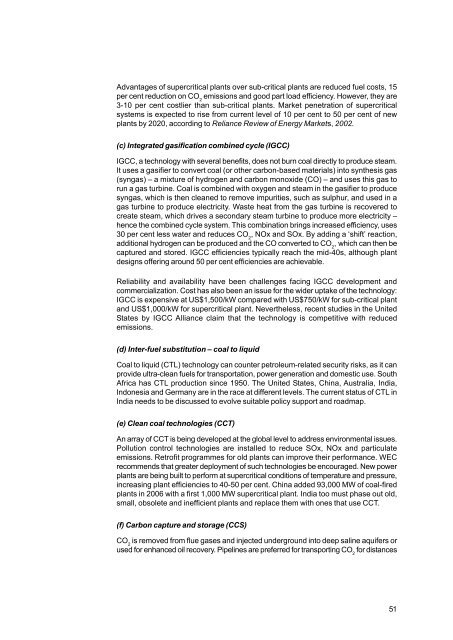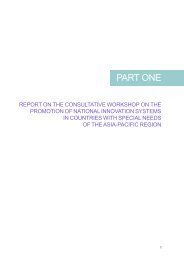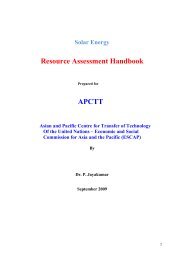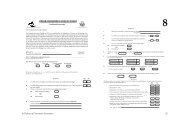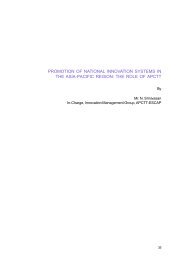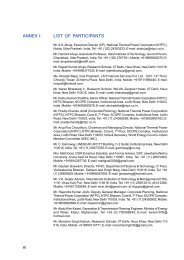Download Complete PDF - apctt
Download Complete PDF - apctt
Download Complete PDF - apctt
- No tags were found...
You also want an ePaper? Increase the reach of your titles
YUMPU automatically turns print PDFs into web optimized ePapers that Google loves.
Advantages of supercritical plants over sub-critical plants are reduced fuel costs, 15per cent reduction on CO 2emissions and good part load efficiency. However, they are3-10 per cent costlier than sub-critical plants. Market penetration of supercriticalsystems is expected to rise from current level of 10 per cent to 50 per cent of newplants by 2020, according to Reliance Review of Energy Markets, 2002.(c) Integrated gasification combined cycle (IGCC)IGCC, a technology with several benefits, does not burn coal directly to produce steam.It uses a gasifier to convert coal (or other carbon-based materials) into synthesis gas(syngas) – a mixture of hydrogen and carbon monoxide (CO) – and uses this gas torun a gas turbine. Coal is combined with oxygen and steam in the gasifier to producesyngas, which is then cleaned to remove impurities, such as sulphur, and used in agas turbine to produce electricity. Waste heat from the gas turbine is recovered tocreate steam, which drives a secondary steam turbine to produce more electricity –hence the combined cycle system. This combination brings increased efficiency, uses30 per cent less water and reduces CO 2, NOx and SOx. By adding a ‘shift’ reaction,additional hydrogen can be produced and the CO converted to CO 2, which can then becaptured and stored. IGCC efficiencies typically reach the mid-40s, although plantdesigns offering around 50 per cent efficiencies are achievable.Reliability and availability have been challenges facing IGCC development andcommercialization. Cost has also been an issue for the wider uptake of the technology:IGCC is expensive at US$1,500/kW compared with US$750/kW for sub-critical plantand US$1,000/kW for supercritical plant. Nevertheless, recent studies in the UnitedStates by IGCC Alliance claim that the technology is competitive with reducedemissions.(d) Inter-fuel substitution – coal to liquidCoal to liquid (CTL) technology can counter petroleum-related security risks, as it canprovide ultra-clean fuels for transportation, power generation and domestic use. SouthAfrica has CTL production since 1950. The United States, China, Australia, India,Indonesia and Germany are in the race at different levels. The current status of CTL inIndia needs to be discussed to evolve suitable policy support and roadmap.(e) Clean coal technologies (CCT)An array of CCT is being developed at the global level to address environmental issues.Pollution control technologies are installed to reduce SOx, NOx and particulateemissions. Retrofit programmes for old plants can improve their performance. WECrecommends that greater deployment of such technologies be encouraged. New powerplants are being built to perform at supercritical conditions of temperature and pressure,increasing plant efficiencies to 40-50 per cent. China added 93,000 MW of coal-firedplants in 2006 with a first 1,000 MW supercritical plant. India too must phase out old,small, obsolete and inefficient plants and replace them with ones that use CCT.(f) Carbon capture and storage (CCS)CO 2is removed from flue gases and injected underground into deep saline aquifers orused for enhanced oil recovery. Pipelines are preferred for transporting CO 2for distances51


